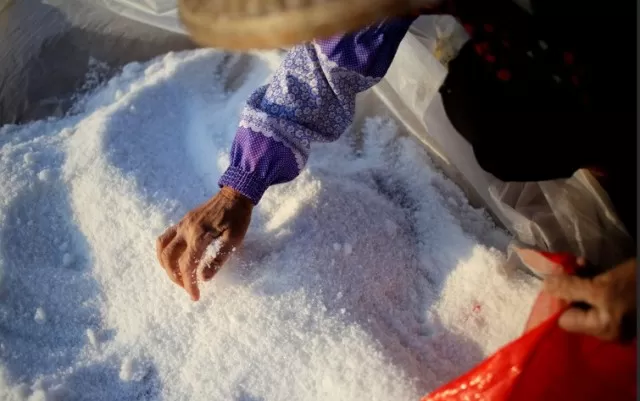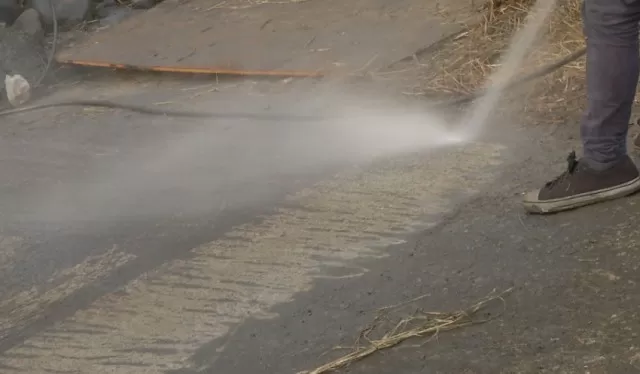Icy Surface Solutions: 3 Fixes for Slippery Walkways. Ice melting traction granules are effective at both providing immediate traction and melting ice, reducing the risk of slips and falls. They are generally safe for vegetation and less damaging to concrete than pure deicers. However, as with any deicing product, follow the manufacturer’s instructions for optimal use.
Remember, when using deicers, it’s essential to wear appropriate footwear with good traction, and exercise caution while walking on any treated surfaces. Regularly clear snow and ice from your walkway and apply deicers as needed to maintain safe conditions throughout the winter season.
Enhancing Traction on Icy Surfaces: Using Kitty Litter for Safety and Stability

When facing icy conditions on your driveway or walkway, you can effectively remove the ice using Rubbing Alcohol.
Rubbing alcohol, with its low freezing point, serves as an excellent deicer and can save you money and a trip to the hardware store. Here’s a step-by-step guide on how to use rubbing alcohol to remove driveway ice:.
Gather the necessary materials: You will need rubbing alcohol (preferably 70% concentration), warm water (if making a solution), a spray bottle (if making a solution), and a broom or shovel to help remove any remaining ice.
If using rubbing alcohol directly: If you prefer using rubbing alcohol directly, simply pour it onto the icy areas of your driveway or walkway.
Ensure that you cover the icy patches thoroughly with the rubbing alcohol.
If making a solution: For a solution that can be stored and used throughout the year, mix two parts rubbing alcohol with one part warm water in a spray bottle.
Shake the bottle gently to ensure the solution is well-mixed.
Apply the solution: Liberally spray or pour the rubbing alcohol solution onto the icy surface, ensuring complete coverage.
The rubbing alcohol will start melting the ice on contact.
Allow time for melting: After applying the rubbing alcohol, allow it some time to work on the ice.
The alcohol will gradually melt the ice, making it easier to remove.
Remove the ice: Once the ice has begun to melt, use a broom or shovel to break up and remove the remaining ice.
Be careful not to damage the surface beneath the ice while removing it.
Repeat if necessary: Depending on the thickness of the ice, you may need to repeat the process if some areas are still icy.
Apply more rubbing alcohol or the solution as needed and give it time to melt the ice.
Exercise caution: While rubbing alcohol is effective at melting ice, it’s essential to exercise caution when using it.
Avoid spraying or pouring rubbing alcohol near flames or sparks, as it is flammable. Additionally, be cautious while walking on the surface until all ice has melted and the area is safe.
By following these steps, you can utilize rubbing alcohol as an effective and cost-efficient method to remove ice from your driveway or walkway.
Stay safe and enjoy a clear and hazard-free path during icy conditions.
Efficient Ice Removal: Melting Driveway Ice with Magnesium Chloride

Removing driveway ice with magnesium chloride is an effective and environmentally friendly method.
Follow these steps to utilize magnesium chloride pellets for efficient ice removal:.
Obtain magnesium chloride pellets: Purchase magnesium chloride pellets, preferably in pellet form for optimal results.
You can find them at hardware stores, home improvement centers, or online platforms like Amazon.
Prepare for application: Put on protective gloves and ensure you have proper clothing to handle the magnesium chloride pellets safely.
Distribute the pellets: With the pellets in hand, disperse them evenly over the icy areas of your driveway or walkway.
Aim for uniform distribution to maximize the melting effect.
Penetration and melting: As the magnesium chloride pellets penetrate the ice, the chemical components react with the ice, causing it to melt.
The lower freezing point of magnesium chloride allows it to effectively tackle moderate to significant ice accumulations.
Wait for melting: Give the magnesium chloride pellets some time to work on the ice.
Depending on the thickness and severity of the ice, it may take some time for complete melting to occur.
Additional application if necessary: If there are stubborn or thick ice patches that require further attention, apply additional magnesium chloride pellets as needed.
Focus on areas that are still icy and wait for the melting process to take effect.
Clear away melted ice: Once the ice has melted, use a broom or shovel to clear away the remaining slush or water from the driveway or walkway.
This step will help prevent the formation of new ice as temperatures fluctuate.
Store leftover pellets: If there are unused magnesium chloride pellets, store them properly in a sealed container or bag for future use.
Make sure to keep them in a cool and dry place to maintain their effectiveness.
By following these steps, you can utilize magnesium chloride pellets to effectively remove ice from your driveway or walkway.
Remember to prioritize safety by wearing protective gear and handle the pellets responsibly. Enjoy a cleared and safer pathway, while also being mindful of the positive environmental impact of using magnesium chloride as an ice-melting solution.
Nature-Friendly Ice Removal: Harnessing the Power of Rubbing Alcohol for Clear Driveways

When it comes to removing driveway ice, kitty litter can be a useful alternative to provide traction and minimize slips and falls.
Follow these steps to utilize kitty litter for improved traction on icy surfaces:.
Gather the necessary materials: Obtain non-clumping kitty litter, which is more effective for providing traction.
If you don’t have kitty litter, you can substitute it with other gritty materials such as sand, wood chips, sawdust, or fireplace ash.
Prepare for application: Put on appropriate clothing and gloves to protect yourself while handling the kitty litter or substitute material.
Sprinkle the kitty litter: Take a fair amount of non-clumping kitty litter in your hand and evenly scatter it over the icy areas of your driveway or sidewalk.
Focus on areas where slips and falls are more likely, such as the path you walk on or the furrows created by tire treads on the driveway.
Ensure coverage: Make sure the kitty litter granules are spread out, covering the icy surface adequately.
This will provide enhanced traction and increase grip when walking or driving on the slippery surface.
Gain firmer footing: As you walk or drive on the treated areas, the granules of kitty litter create friction, allowing for firmer footing and reduced slipperiness.
This helps prevent accidents and provides a safer pathway.
Clean up afterward: Once the ice has melted or the slippery conditions have passed, clean up the used kitty litter or substitute material from the driveway or sidewalk.
Dispose of it properly, or if using natural materials like sand or wood chips, you can reuse them for other purposes like gardening or landscaping.
Remember to exercise caution even with the application of kitty litter or other gritty materials.
They can improve traction, but ice can still be present underneath, so always be mindful of potential hazards.
By following these steps, you can utilize kitty litter or alternative materials to improve traction and reduce the risk of slips and falls on icy surfaces.
Stay safe during wintry conditions and enjoy a more secure pathway without cluttering your shed or garage.
*The information is for reference only.